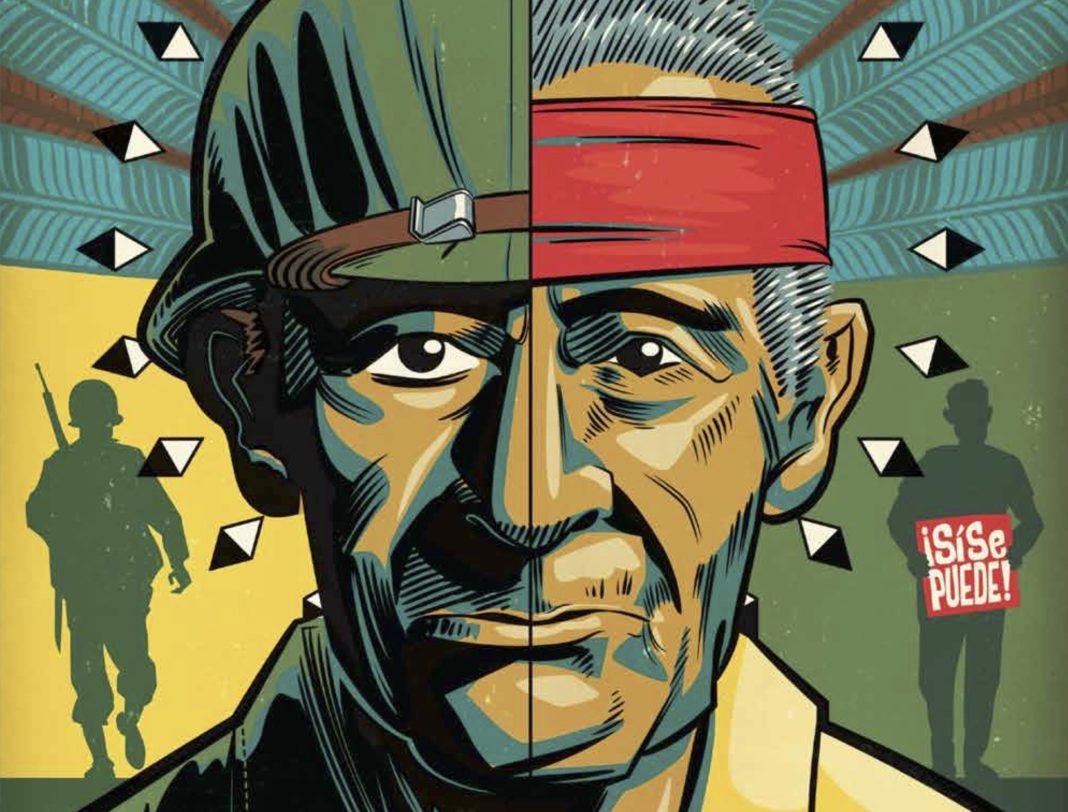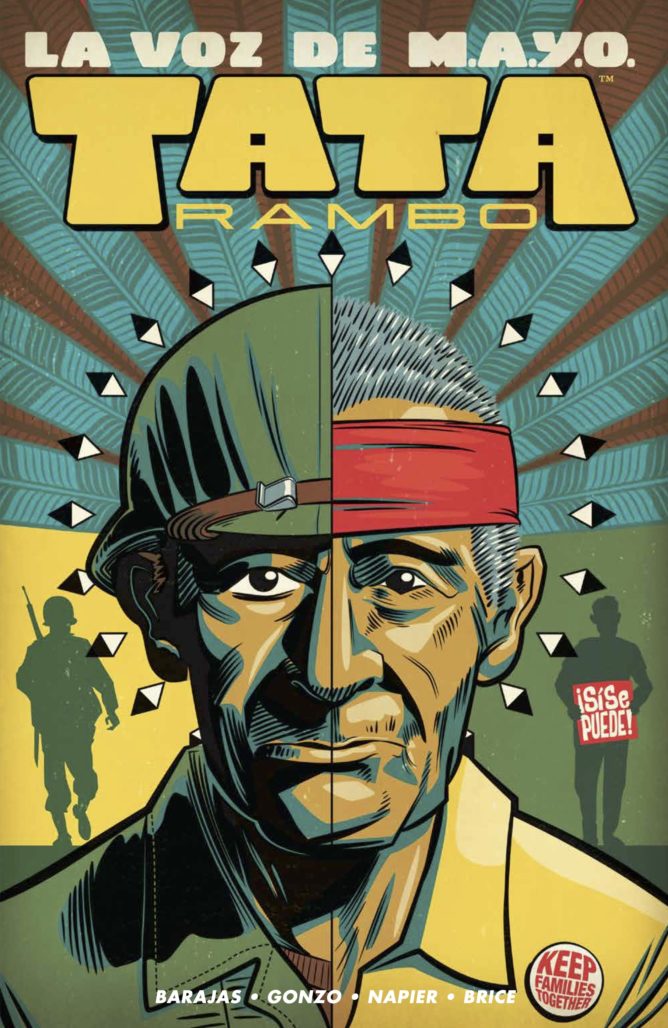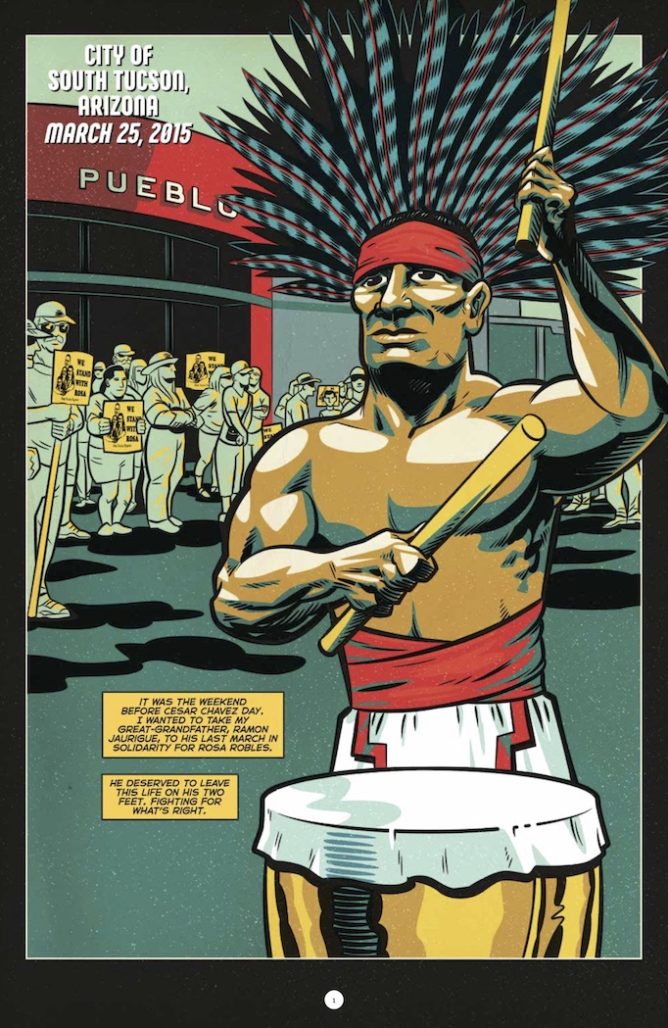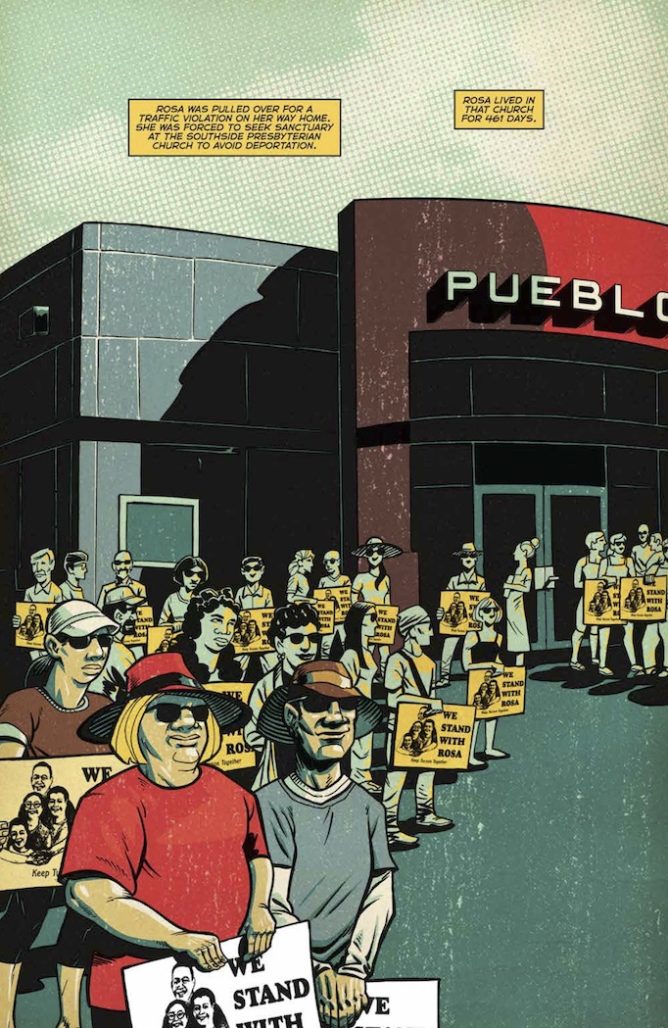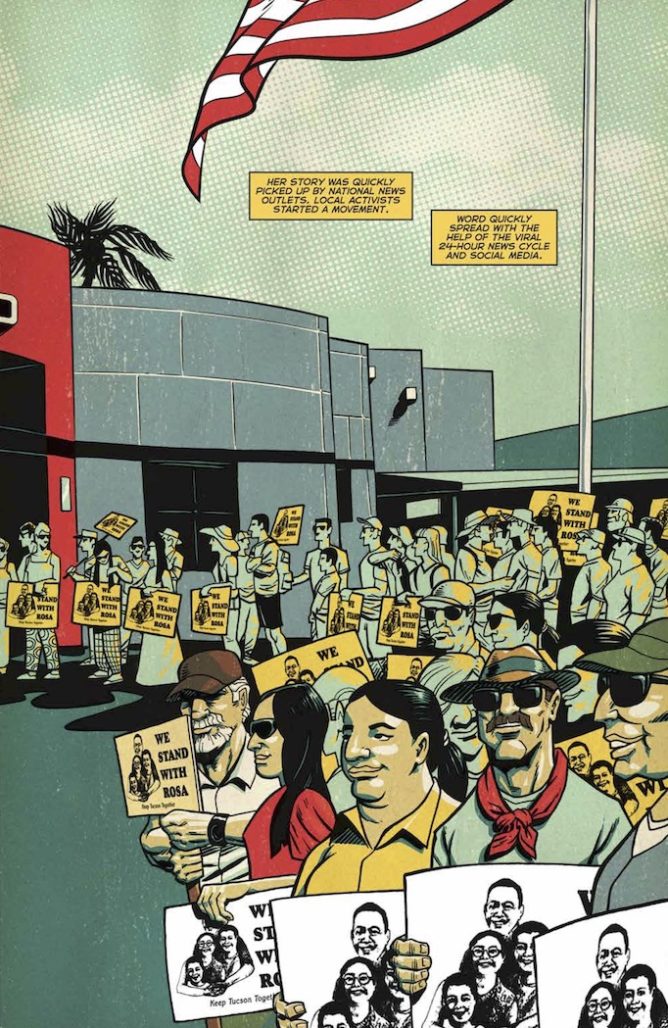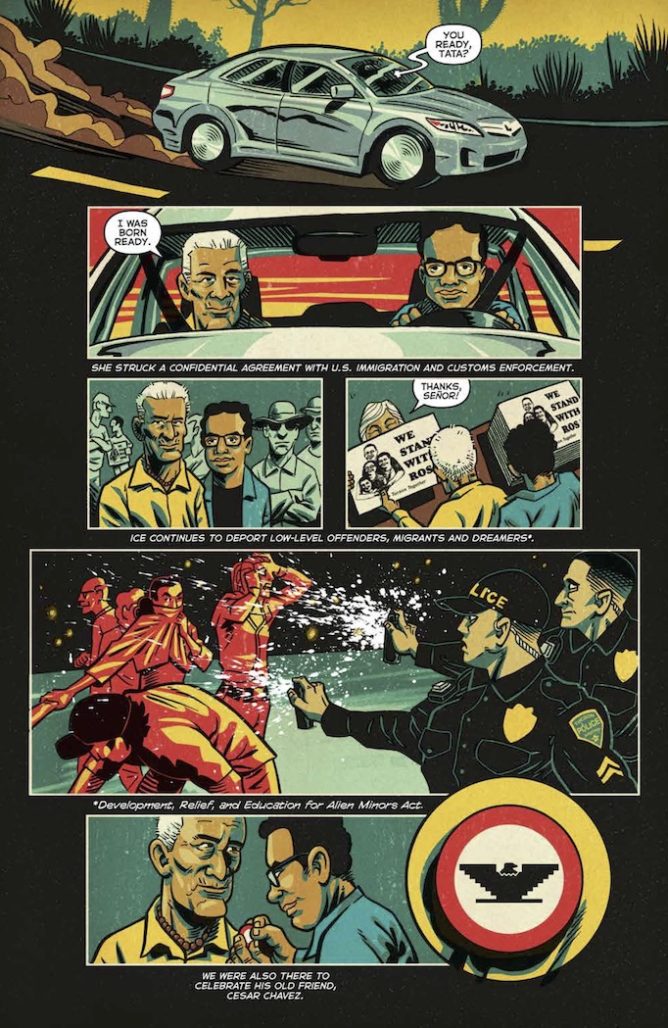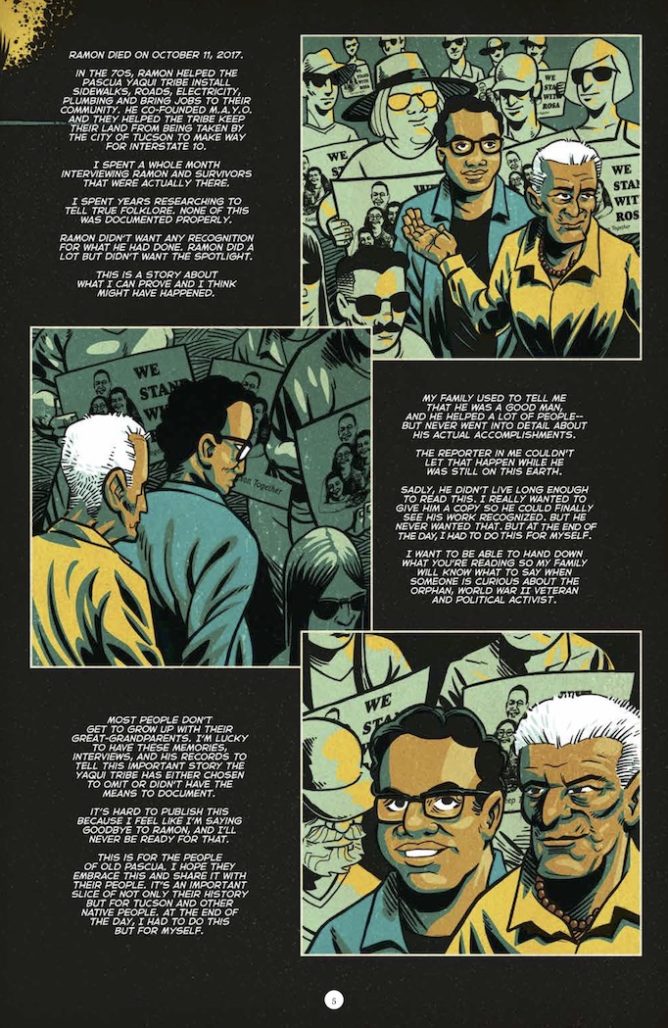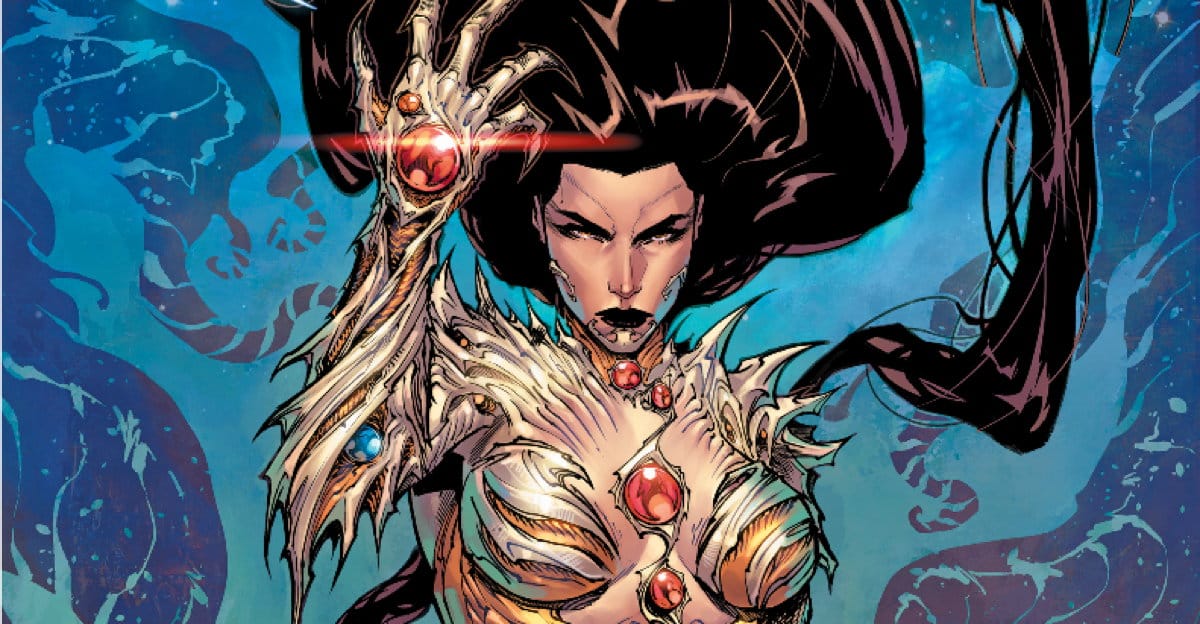I met Henry Barajas a couple of months ago during a Beat writer’s room ahead of New York Comic-Con. I was immediately intrigued that Henry’s graphic novel, La Voz de M.A.Y.O, was being published by Top Cow. Even though the imprint has recently published a string of impressive creator-owned titles, historical nonfiction is well outside its normal wheelhouse. For Top Cow to take a chance on La Voz de M.A.Y.O., I knew there had to be something special there.
My suspicions were confirmed once I had the opportunity to read the graphic novel. It tells the story of how Henry’s grandfather co-founded the Mexican, American, Yaqui, and Others (M.A.Y.O.) organization, which successfully lobbied the Tucson City Council to improve conditions for members of the Pascua Yaqui tribe. Reading the book left me with plenty of questions that I’m grateful Henry Barajas had the time to answer.
What was the pitch process like for La Voz de M.A.Y.O.?
My boss Matt Hawkins asked me what I was working on because I was about to take it to Kickstarter. Matt liked what I was trying to do and offered to help publish my story if J. Gonzo drew it. Thankfully, Gonzo and I went back from my time in Arizona. We always flirted with the idea of working with each other. But it was like that “hey let’s do coffee” and we never followed up. But Matt is really good at putting books together. We’re lucky that Matt had faith in us because we had interest from publishers, but no one wanted to help pay for pages.
The graphic novel is broken into separate chapters. Was that in case a publisher wanted to publish the comic in issue form?
It’s easier to crowdfund 8K at a time versus 30K all at once. It was important for me to own my family’s history and make sure that the art team was paid. I took the direct to consumer approach and Kickstarter made it possible. My goal was for the direct market, libraries, and book shops to get the whole story. I wanted to aim past the four thousand or so diamond accounts and reach for 38K libraries that are hungry for comics that feature Latinx & Native American material.
What roles does Top Cow play as the publisher of La Voz de M.A.Y.O. beyond printing and distributing the graphic novel?
Top Cow helped me find Gonzo. Image Comics’ Library representative, Chloe Ramos, has helped me get face-to-face time with librarians at the NYPL. She helped me secure the Library Con Live keynote lunchtime speech. Top Cow has given me free rein to work with the direct market and libraries. Hawkins and I worked the Kern County Library and their annual comic book convention. It was spectacular.
Are you and Top Cow marketing the book to educational institutions?
We are leaning more towards libraries. I have a couple of educators that are including the book in their syllabus, but it takes a while for schools to release the funding to add the new text materials. The forward was written by Fredrick Aldama. He teaches at the University of Ohio. He is the Charles Xavier of Latinx comic book creators.
Does your approach to writing or structuring a graphic novel change when you’re hoping to reach an audience that isn’t necessarily fluent in comics?
La Voz is a combination of comics and journalism. I’m trying to tell a compelling story while sharing facts and events. But we respect the medium and try to use it to our advantage. Every page connects the next. We tell the story in panels. The color scheme is limited and mirrors a Tucson sunset. It’s an onion with lots of layers.
The story travels from his past to your present. Was that decision influenced by other biographical comics like Maus or is it what immediately felt right to you?
While I was writing the book, I felt like I was talking to a couple of different people. I felt like I was talking to my tata at the end of his life. The documents and paperwork had me connected to Ramon from the 1970s. I felt like I was time traveling for five years.
As you mention in the opening pages, you needed to occasionally fill in the gaps with your best guess at how events transpired. Was that a difficult process?
That was where I had the most fun. Getting to the climax and making it interesting. The difficult process was hearing from my family. I didn’t want their feelings about telling this story affect the art.
The M.A.Y.O. has such an interesting history, as you displayed so well in the book. Why do you think the organization was largely forgotten despite of that?
I think it was because of Ramon. He didn’t want recognition and he was the head of the event. His humble approach put a lot of people in the dark. Not only telling my Tata’s story was important, but, remembering the community at large.
In the book, you explain that you’re destined to be a storyteller and list past careers where you’ve done exactly that. Is writing comics the ideal way to express yourself as a storyteller, or do you see yourself exploring more paths going forward?
I want to make comic books until I can’t. Making comics is what gets me out of bed. I think La Voz would make a good film or television series. The world needs this story and I think there are plenty of Native and Latinx actors out there that would do these amazing personalities justice.
Follow Henry Barajas on Twitter @HenryBarajas. La Voz de M.A.Y.O. is on sale now!
Matt Chats is an interview series featuring discussions with a creator or player in comics, diving deep into industry, process, and creative topics. Find its author, Matt O’Keefe, on Twitter and Tumblr. Email him with questions, comments, complaints, or whatever else is on your mind at [email protected].


